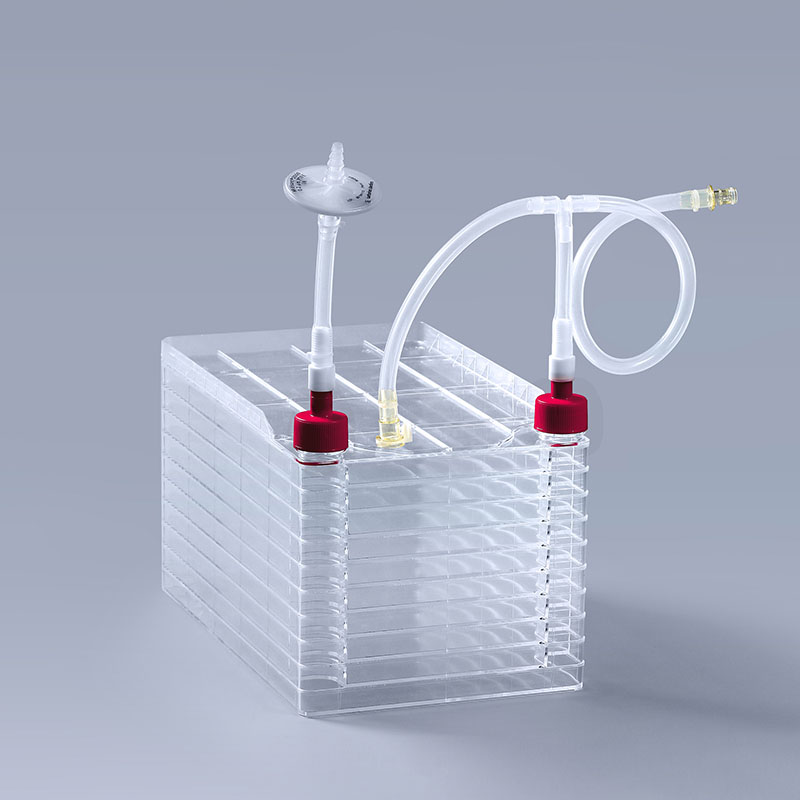When culturing cells in a cell factory, trypsin digestion is a critical step. Trypsin, a protease, acts on specific sites of peptide chains to degrade proteins, facilitating the detachment of cells from the culture surface. This process is essential for cell passaging.
Function of Trypsin in Cell Culture
Trypsin mainly targets the proteins that mediate cell adhesion to the culture vessel surface, breaking them down and allowing cells to move freely within the cell factory. This step is indispensable in cell passaging, particularly for adherent and soft tissue cells.
Precautions When Using Trypsin
Control Digestion Time: Monitor the movement of the adherent cell layer to determine digestion time. Once cells begin to detach in a granular manner, stop digestion immediately to prevent excessive damage.

Optimize Digestion Conditions: Trypsin activity is influenced by various factors such as pH, temperature, and concentration. Maintaining these conditions within optimal ranges ensures maximum trypsin effectiveness and supports healthy cell growth.
Select the Appropriate Trypsin: Choose the suitable type and concentration of trypsin based on the characteristics of the cell type, such as Trypsin or Trypsin-EDTA. The right selection enhances cell detachment efficiency and improves cell viability.
Storage and Quality Check: Always check the storage conditions and expiration date of trypsin before use to ensure its enzymatic activity remains intact. Expired or improperly stored trypsin may result in ineffective digestion, negatively affecting cell health.
Trypsin plays a vital role in cell factories. By controlling digestion time, optimizing conditions, and selecting the appropriate enzyme type, cell passaging can be efficiently performed, ensuring healthy cell growth and proliferation. Understanding and following these precautions is key to successful cell culture operations.
The FAI climbed 5.9 percent year-on-year in the first 11 months of 2018, quickening from the 5.7-percent growth in Jan-Oct, the National Bureau of Statistics (NBS) said Friday in an online statement.
The key indicator of investment, dubbed a major growth driver, hit the bottom in August and has since started to rebound steadily.
In the face of emerging economic challenges home and abroad, China has stepped up efforts to stabilize investment, in particular rolling out measures to motivate private investors and channel funds into infrastructure.
Friday's data showed private investment, accounting for more than 60 percent of the total FAI, expanded by a brisk 8.7 percent.
NBS spokesperson Mao Shengyong said funds into weak economic links registered rapid increases as investment in environmental protection and agriculture jumped 42 percent and 12.5 percent respectively, much faster than the average.
In breakdown, investment in high-tech and equipment manufacturing remained vigorous with 16.1-percent and 11.6-percent increases respectively in the first 11 months. Infrastructure investment gained 3.7 percent, staying flat. Investment in property development rose 9.7 percent, also unchanged.
 English
English


















































